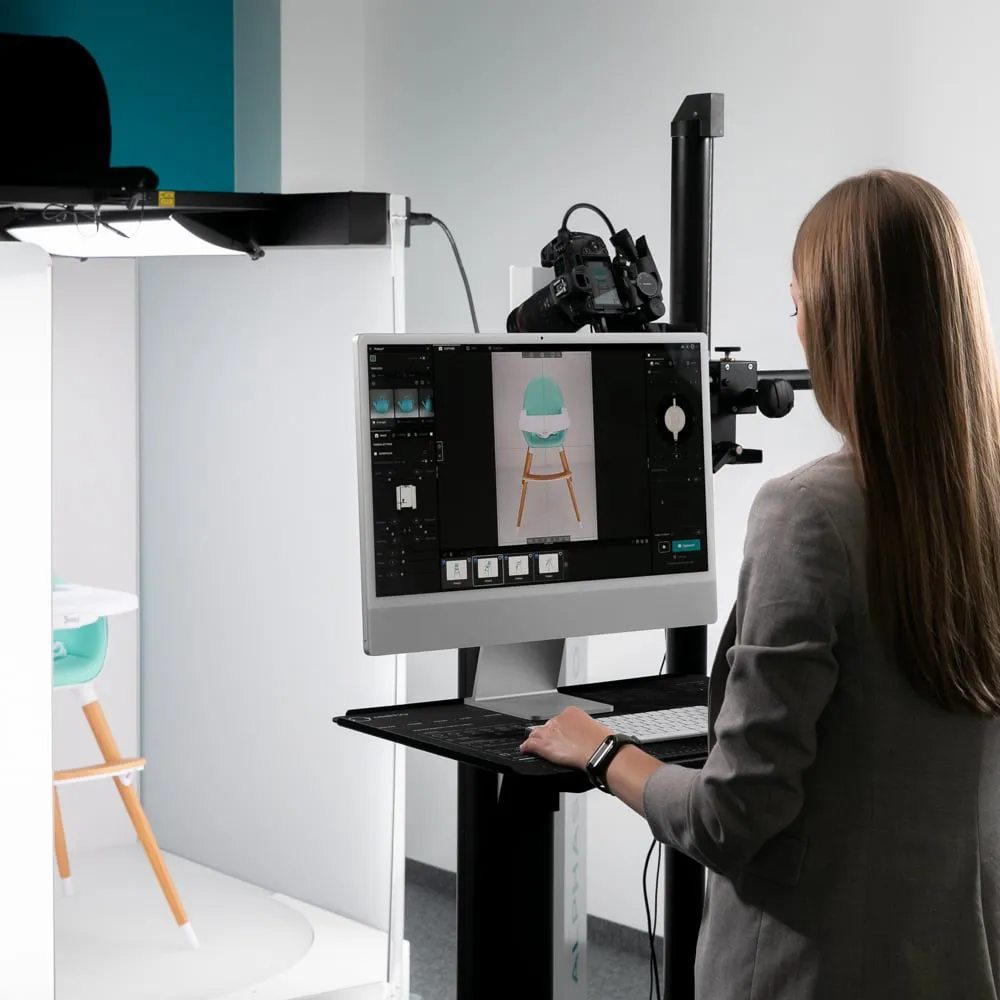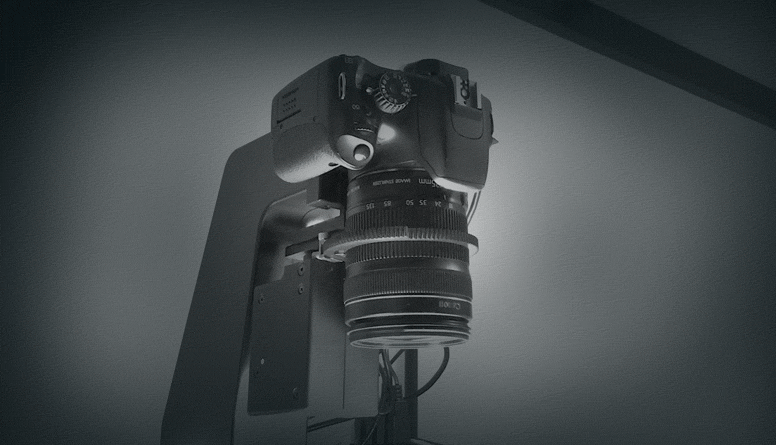

How do you choose the best lens for packshot photography? All the questions to ask
Nowadays, the quality of a visual product no longer depends solely on light or decor. The photo lens now plays a central role in the success of a packshot. At a time when the precision of a detail can make the difference between a click and a cart abandonment, choosing the right approach becomes a strategic step for any company that wants to promote its products through image.
Jewelry, cosmetics, textiles, technical objects, shiny surfaces, textured materials... each product category requires a different finish, and therefore an adapted objective.
In this guide, PackshotCreator helps you understand major technological developments, critical criteria and advanced techniques to get the most out of your camera lens. We also share our feedback with Orbitvu automated studios — and in particular the Alphashot Pro G2 — which make it possible to reveal the full potential of these lenses in a 100% controlled workflow.
Why the choice of photo lens has become a strategic issue in packshot photography
A good lens not only guarantees a sharp image, but also True to color, without deformations, nor parasitic reflections. It allows you to accurately reproduce the reality of the product, while highlighting what makes it unique.
In packshot photography, the constraints are specific:
- The products are Fixed, often Small, sometimes Brilliant
- The decor is generally neutral or transparent
- The plans should be constant, reproducible, often in the context ofautomation
- The final quality must be usable both in e-commerce thumbnail What about large format printed
These are all reasons to go beyond the simple notion of “good zoom” or “bright lens”, and to methodically choose the lens most suited to your product range and your organization.

New camera lens technologies and their impact on the packshot
Artificial intelligence and predictive autofocus
If your products are photographed in Turntable movement, some objectives integrating AI algorithms are capable ofanticipate and maintain focus throughout the rotation. This is an advance that can be found more and more in the professional Canon, Sony or Nikon ranges, and which is finding real use in automated photography.
These modern autofocus systems use artificial intelligence algorithms to Predicting movement topics and Adjust the focus accordingly. This technology is particularly useful for fast-moving or erratic subjects, allowing for more accurate focusing with acquisition times as low as 0.05 seconds for some high-end models.
These lenses save a significant amount of time when shooting serially, especially if you use an automated studio that combines multiple angles and formats.
New generations of optical lenses
Les multilayer treatments applied to lenses (in particular technologies anti-glare and anti-halos) have made enormous progress. Result: the colored fringes at the edge of the product (chromatic aberrations) are better controlled, and the shiny surfaces (bottles, plastics, polished metal) are restored more cleanly.
For packshot photography, this means more accurate, less retouched images, and a faster workflow.
What are the different types of lenses used in packshot photography, and when should you choose them?
Macro lens: essential for details, textures, and small objects
The macro lens remains the reference when it comes to photographing small objects (jewelry, bottles, components), or to highlight texture details (cream, mother-of-pearl, machined metal, etc.).

Thanks to their 1:1 magnification ratio, these lenses make it possible to project onto the sensor a full-scale image, without loss of sharpness. It is this type of lens that is recommended to fully exploit the function of Focus Stacking in automated studios, which makes it possible to obtain a total sharpness even on complex volumes.
A 100mm focal length is often preferred to avoid unwanted distortion or drop shadows. Recommendations:

Note: these lenses are also ideal for cosmetic textures, screw caps, or anything that requires ultra-precise reading.
Fixed focus lens: for maximum sharpness and consistent professional results
A fixed focus lens (for example 50 mm, 85 mm or 100 mm) generally offers a Upper stitch and less distortion only a zoom. It's perfect for medium to large products when you have the necessary distance in the studio.
The absence of zoom forces the photographer to adapt his distance to the product, but guarantees a constant angle of view, very useful in the production of serial visuals.
This consistency is even more valuable if you're using an automated studio, where every angle, distance, and setting can be recorded for later reuse as it is.
Zoom lens: versatility and time savings in multi-product environments
Modern zooms like the Canon 24-105mm f/4L allow you to quickly switch from one object to another without changing the lens. For a company that photographs several families of products, this is a significant time saver.

Be careful though: not all zooms are equal. Some entry-level models offer lower sharpness or marked vignetting. For best results, prefer models from Pro or semi-pro series, with a constant aperture.
Wide-angle lens: to be reserved for bulky objects or for staging
A wide-angle lens (less than 35mm) can be useful for shooting furniture, appliances, or models. But it introduces a Perspective distortion (domed effect) that alters the perception of the product.

In automated packshots, its use is rare. It remains an interesting tool for creating contextual images or stylized packshots, for example in the decoration or sports sectors.
What technical criteria should you analyze to choose the right lens for packshot photography?
Recommended minimum focal length: 50mm
In packshots, focal lengths under 50mm introduce visible distortions, especially at the edges. It is therefore recommended to opt for a lens starting from 50 mm, or even 85 mm or 100 mm to get natural perspectives and a good perspective.
Attention: on an APS-C sensor device, the perceived focal length is extended by approximately 1.5x. A 50mm then becomes a 75mm, which can be an advantage for small objects.
Magnification ratio: to capture even the smallest details
The 1:1 magnification ratio is essential to reproduce a full-size object on the sensor. This is what makes it possible to capture each engraving, texture or reflection on a ring, a bottle or a careful packaging.

Not all lenses labeled “macro” are 1:1: always check the technical specifications. With a 1:2 lens, the image on the sensor will be twice as small as the real object — which limits sharpness in close-ups.
Minimum focus distance
If you're using an automated photo studio (like the Alphashot Pro G2), you can't always move the camera deeply. So it's crucial that your lens can focus at close range without having to back up.
The technical data sheets specify this distance. Below 30 cm, you are comfortable with the majority of small products.
Attention: on an APS-C sensor device, the perceived focal length is extended by approximately 1.5x. A 50mm then becomes a 75mm, which can be an advantage for small objects.
Recommended aperture: between f/8 and f/11
An aperture of f/8 to f/11 offers a good compromise between sharpness, depth of field and exposure. Below f/5.6, background blur can become a problem. Beyond f/16, diffraction progressively degrades image quality.

In the case of very large or complex products (handbag with handle, contoured bottle, etc.), you can consider the automated focus stacking to ensure perfect sharpness throughout the volume.
Which lens should you choose depending on the type of product to be photographed?
Jewelry and small precision objects: the macro lens is essential
These are the products that require the most image sharpness. The sharpness must be perfect, the reflections controlled, the stones or textures well legible.
An objective 100 mm macro, associated with automatic focus stacking from an Orbitvu studio, is the ideal combination here. It guarantees continuous sharpness over the entire depth of the product.
Recommended examples:
Cosmetics and fine textures: valorize materials
Pearls, exfoliating grains, foams or oils... the sensory richness of cosmetic textures must be translated visually. The macro is also recommended here, with a large aperture (f/4 or f/5.6) to enhance the relief.
La cross polarization can be very useful on glossy packaging to remove parasitic reflections.
Clothing and textile products: a balanced focus for natural volumes
On a mannequin or bust, the textile requires a good restoration of proportions. A fixed focal length of 50 to 85mm is ideal. It prevents shoulder or chest deformation, while maintaining a natural perspective.
Remember to adapt your focal length to the size of the product and the distance available in your studio.

Shiny and reflective objects: controlling reflections
Reflective objects pose real technical challenges. A smooth surface acts like a mirror and reflects the environment, including the lens itself. Orbitvu studios incorporate solutions to get around this problem:
- Multi-source lighting to homogenize the light and avoid burnt spots
- Polarizing filters on the sources and on the lens (cross-polarization)
- Precise positioning LEDs to create controlled and rewarding reflections
To reinforce this effect, some photographers also use mattifying sprays (temporary optical powder) that attenuate reflections without altering the surface of the product.
Packshot video photography: what lenses should you use to film moving products?
Video content is becoming central in e-commerce and social media strategies. Producing product videos requires a lens that can follow movement without losing sharpness, while maintaining a good depth of field.
Here are some criteria to consider:
- Silent and smooth autofocus To avoid extraneous sounds during recording
- Stability if you work freehand (or prefer a rail + motorized platter in the studio)
- Medium or macro focus by the type of plan

Some Orbitvu studios make it possible to automate these movements (rotation, zoom variation, angle change) while maintaining perfectly controlled light, frame by frame.
Are there good photo lenses for packshots on a limited budget?
Yes, as long as you make the right compromises. Several third-party manufacturers now offer high-performance lenses at controlled prices.
A few examples:
- Sigma 105mm f/2.8 Macro : very good quality/price ratio, effective autofocus, compatible Canon/Nikon/Sony
- Tamron SP 90mm f/2.8 Di Macro : very correct stitching, often used in the studio
- Canon 50mm f/1.8 STM : reliable entry-level, widely used for medium-sized objects
- Nikkor 50mm f/1.8G : a solid base for beginners or businesses starting their in-house studio
However, be sure to frame/case compatibility, and check that the lens is recognized by your Orbitvu software if you are working in an automated studio.
And to go further: maintain and perpetuate your photo lenses
A good lens can last for a decade or more if properly maintained. Here are the practices to adopt:
- Clean the lenses regularly with a soft brush and microfiber cloth
- Use a alcohol-free optical solution, applied to the cloth, never directly to the lens
- Avoid dusty or humid environments
- Store goals in a airtight box with anti-humidity bag if possible
A clean, well-stored, and well-calibrated lens provides consistent results and extends the life of your investment.
Conclusion: choosing the right lens means guaranteeing the visual quality of your brand
Packshot photography is no longer just a sharp image on a white background. It is a visual strategy in its own right. The choice of camera lens determines not only the quality of the shots, but also their fidelity, consistency and their impact on your sales.
Each product, each use, each workflow has its requirements. Thanks to the solutions offered by PackshotCreator and to automated studios Orbitvu, you can not only choose the right lens, but above all, fully exploit it in a controlled, repeatable, fast and professional environment.
To test lenses, compare renderings, explore light or video options, we welcome you to Orbitvu Experience Center from Levallois. A place designed to experiment, understand and go further in your visual strategy.



